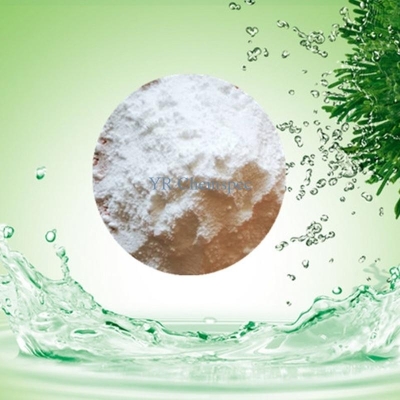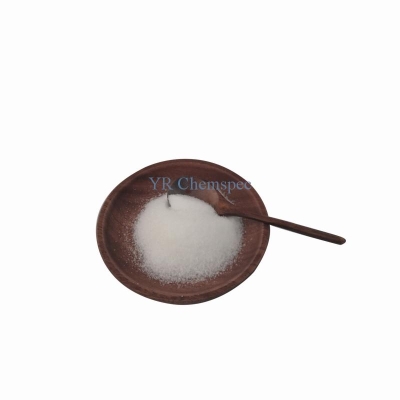-
Categories
-
Pharmaceutical Intermediates
-
Active Pharmaceutical Ingredients
-
Food Additives
- Industrial Coatings
- Agrochemicals
- Dyes and Pigments
- Surfactant
- Flavors and Fragrances
- Chemical Reagents
- Catalyst and Auxiliary
- Natural Products
- Inorganic Chemistry
-
Organic Chemistry
-
Biochemical Engineering
- Analytical Chemistry
- Cosmetic Ingredient
-
Pharmaceutical Intermediates
Promotion
ECHEMI Mall
Wholesale
Weekly Price
Exhibition
News
-
Trade Service
Image: Dr.
Jiliang Zhou (left) and Dr.
Kunzhe Dong
Source: Michael Horahan, Augusta University
Scientists report that an RNA molecule called CARMN is found in abundance in healthy smooth muscle cells, and this molecule helps our blood vessels strengthen and become more flexible, which is significantly reduced in vascular diseases such as atherosclerosis, atherosclerosis It is the leading cause of heart disease and stroke
.
Their findings in human tissue and rodent models of vascular disease provide new insights into how smooth muscle cells in the blood vessel wall move from providing a healthy pathway for blood flow to moving in the coronary arteries and/or Plaques form in these arteries following common treatments, including angioplasty and stenting
.
They may also point to a new way to avoid both, which could one day include adding CARMN to drug-eluting stents, currently coated with anti-proliferative drugs to help stop unhealthy cell proliferation and scarring, This can be caused by placing them
.
"If you have low levels of CARMN, it likely makes you more susceptible to atherosclerosis or angioplasty-induced restenosis," said Dr.
Jiliang Zhou.
"If CARMN is downregulated, it will induce or trigger these smooth muscles.
Cells become unhealthy or diseased
.
"
When the scientists restored healthy CARMN levels in a common model of vascular disease, unhealthy cell proliferation and scarring within blood vessels was significantly reduced, and when they removed CARMN from smooth muscle cells, the damage response was exaggerated, leaving little room for blood flow small
.
Many of us may think that RNA makes proteins, and the proteins made by RNA determine the function of genes
.
Less-studied noncoding RNAs do not make proteins, but do help regulate cells and have been shown to play a role in many different normal body functions as well as disease states such as cancer
.
Dr.
Kunzhe Dong analyzed large-scale human datasets, including RNA sequences from various tissues and cell types, to find long-noncoding RNAs
.
These datasets allowed them to compare the expression of healthy cells and changed or regulated cells in a single individual
.
CARMN is the only long noncoding RNA in human smooth muscle cells, as demonstrated by subsequent studies in mouse tissue
.
Zhou and his colleagues found that within these cells, CARMN binds to myocardin, a protein and activator of a gene critical for smooth muscle cell differentiation, and increases its activity
.
"They need each other to enhance each other's function," said CARMN, the first noncoding RNA discovered to interact with myocardin, a relationship that appears to be specific and necessary for smooth muscle cells
.
The new data suggest that CARMN's actions include helping to regulate the response of vascular smooth muscle cells to damage that inevitably occurs during common procedures such as angioplasty
.
In angioplasty, invasive cardiologists use balloons, lasers and even drills to restore blood flow to diseased arteries and often place stents, wire-like cylindrical structures that help maintain blood flow within the vessel
.
Smooth muscle cells may try to help repair the injury, but it is known that as part of the injury response, smooth muscle cells become less contractile and more proliferative
.
In some patients, they appear to be overreacting, which may lead to arterial resealing or at least restenosis following angioplasty and/or stenting
.
For example, in their current laboratory study, 14 days after balloon injury (similar to what happens during angioplasty), they found that CARMN expression levels were significantly reduced compared to control arteries
.
When they genetically reduced levels of native CARMN in smooth muscle cells, there was a significant increase in cell proliferation and migration, as well as the formation of a scar inside the artery, called the neointima
.
Conversely, when they used the infectivity of the respiratory disease-induced adenovirus to deliver more CARMN directly to the site of injury, the blockage was reduced
.
The scientists used a green fluorescent protein knock-in reporter mouse model to see how and where CARMN expression changed
.
When Zhou looked at the cellular contents of diseased human or animal coronary arteries, he found that the cell types were essentially the same, and that predominant CARMN expression was almost restricted to smooth muscle cells
.
CARMN levels can even help determine the initial risk of the disease, Zhou said
.
While more work is needed, levels of CARMN vary between individuals and animals, he said
.
The researcher is further exploring this link and wants to answer questions such as whether exercise increases CARMN levels, and whether aging reduces CARMN levels as he expects
.
Smooth muscle cells are the main contractile component of blood vessel walls and many other "hollow" organs such as the bladder and intestine, they write
.
In addition to smooth muscle cells, the scientists also found that CARMN is transiently expressed in cardiac cells, the main cell type of connective tissue that is important for wound healing after the development of the heart in mice and humans after developing fibroblasts
.
CARMN was also found in pericytes, a type of smooth muscle cell found in smaller blood vessels
.
But in healthy smooth muscle cells, CARMN is always present and expressed at high levels
.
This research was supported by a Investigator Award and a Transformational Project Award established by the National Heart, Lung, and Blood Institute and the American Heart Association
.
article title
CARMN is an evolutionarily conserved smooth muscle cell-specific lncRNA that maintains a contractile phenotype by binding myocardin







